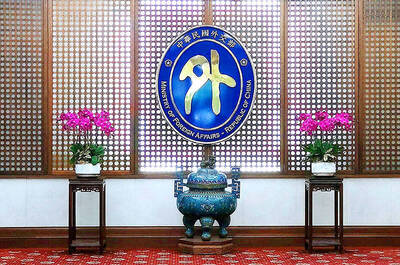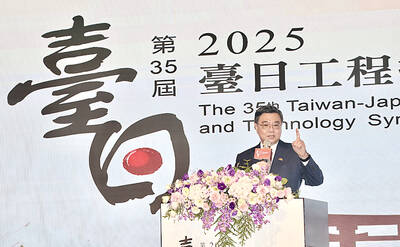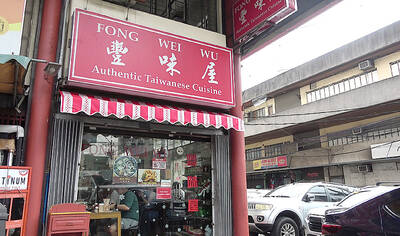Food safety officials and experts attending a Taipei conference on the scandal over contaminated food products from China yesterday concluded that 2.5 parts per million (ppm) should become the international consensus as the “action level” of melamine contamination.
Foods containing melamine at levels below 2.5ppm are safe for human consumption, but foods found to contain more than 2.5ppm of melamine showed poor company practice and health authorities should take regulatory action, such as pulling products from shelves to ensure that the product is not consumed.
The Department of Health (DOH) failed to comment yesterday on what actions, if any, it would take in response to the consensus reached at the conference.
The DOH raised the acceptable level for melamine content in food to 2.5ppm on Sept. 24 during the height of the tainted-food scare. The revision caused alarm among consumers, who wanted a “zero content” standard. Then-DOH minister Lin Fang-yue (林芳郁) resigned a day after the announcement.
The conference also concluded that “no allowable level of melamine will be tolerated,” meaning that melamine-tainted foods would not be tolerated in international trade. However, the conference said that it should be determined when the presence is merely at “background levels” (and therefore safe for consumption) or whether companies were purposely adding melamine to falsely register foods as having a high protein content.
The consensus was reached among domestic and foreign experts from Belgium, Australia, New Zealand and France during the second and last day of the International Experts Conference on Control of Melamine Presence in Foods, hosted by the DOH.
The conference gathered food safety experts to discuss issues such as how to effectively control food contamination in international trade, risk assessment and analytical methodology with regard to melamine detection in foods and policy recommendations and cooperative strategies to prevent melamine-adulterated foods in international trade.
“Everyone who reads the [melamine test] report wants to think that [the result] is only one number, but it’s actually a range of numbers … For example, we can be 95 percent confident that the level of melamine is somewhere between 0.75 to 1.25 [ppm], instead of just 1 [ppm],” said Bill Jolly, deputy director of New Zealand’s Food Safety Authority.
When asked for comment on what equipment should be used in melamine testing, Emmanuelle Moons, an expert from the Federal Agency For the Safety of the Food Chain in Belgium, said that because the equipment for the liquid chromatography-tandem mass spectrometry method is very expensive, she believed high-performance liquid chromatography would suffice.
“It’s not about one or two laboratory results, but about what you can say reliably, time after time, in an accurate fashion across all food types,” Jolly said.
He also said that some foods were more difficult to analyze for the presence of melamine, and that to have a consistent level of reporting: “We must tie it back to risk [management].”
Kang Jaw-jou (康照洲), professor of toxicology at National Taiwan University’s College of Medicine, agreed with Jolly.
“A lot of people are getting lost in chasing numbers … but the numbers are meant to clarify, not control the incidence,” he said.
Experts agreed that authorities need to ensure quality controls meet the best international practice and that risk management is more important than regulatory figures.
They also said the melamine crisis was almost over and that the vast majority of the risk stayed within China.

The Ministry of Foreign Affairs (MOFA) yesterday voiced dissatisfaction with the Comprehensive and Progressive Agreement for Trans- Pacific Partnership (CPTPP), whose latest meeting, concluded earlier the same day, appeared not to address the country’s application. In a statement, MOFA said the CPTPP commission had "once again failed to fairly process Taiwan’s application," attributing the inaction to the bloc’s "succumbing to political pressure," without elaborating. Taiwan submitted its CPTPP application under the name "Separate Customs Territory of Taiwan, Penghu, Kinmen and Matsu" on Sept. 22, 2021 -- less than a week after China

ALIGNED THINKING: Taiwan and Japan have a mutual interest in trade, culture and engineering, and can work together for stability, Cho Jung-tai said Taiwan and Japan are two like-minded countries willing to work together to form a “safety barrier” in the Indo-Pacific region, Premier Cho Jung-tai (卓榮泰) yesterday said at the opening ceremony of the 35th Taiwan-Japan Modern Engineering and Technology Symposium in Taipei. Taiwan and Japan are close geographically and closer emotionally, he added. Citing the overflowing of a barrier lake in the Mataian River (馬太鞍溪) in September, Cho said the submersible water level sensors given by Japan during the disaster helped Taiwan monitor the lake’s water levels more accurately. Japan also provided a lot of vaccines early in the outbreak of the COVID-19 pandemic,

THE GOOD WORD: More than 100 colleges on both sides of the Pacific will work together to bring students to Taiwan so they can learn Mandarin where it is spoken A total of 102 universities from Taiwan and the US are collaborating in a push to promote Taiwan as the first-choice place to learn Mandarin, with seven Mandarin learning centers stood up in the US to train and support teachers, the Foundation for International Cooperation in Higher Education of Taiwan (FICHET) said. At the annual convention of the American Council on the Teaching of Foreign Languages held over the weekend in New Orleans, Louisiana, a Taiwan Pavilion was jointly run by 17 representative teams from the FICHET, the Overseas Community Affairs Council, the Steering Committee for the Test of Proficiency-Huayu, the

A home-style restaurant opened by a Taiwanese woman in Quezon City in Metro Manila has been featured in the first-ever Michelin Guide honoring exceptional restaurants in the Philippines. The restaurant, Fong Wei Wu (豐味屋), was one of 74 eateries to receive a “Michelin Selected” honor in the guide, while one restaurant received two Michelin stars, eight received one star and 25 were awarded a “Bib Gourmand.” The guide, which was limited to restaurants in Metro Manila and Cebu, was published on Oct. 30. In an interview, Feng Wei Wu’s owner and chef, Linda, said that as a restaurateur in her 60s, receiving an